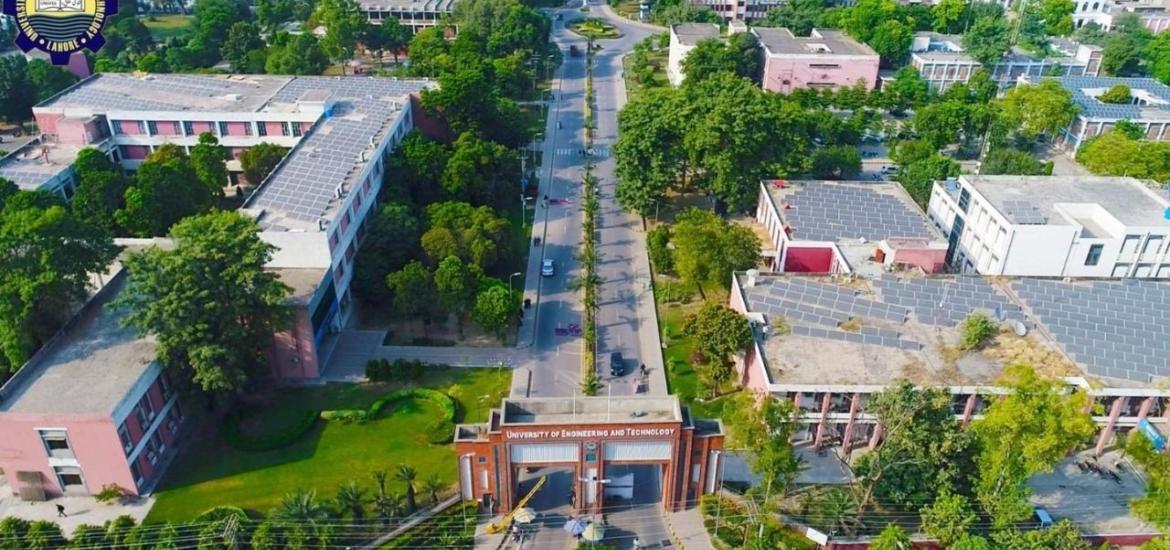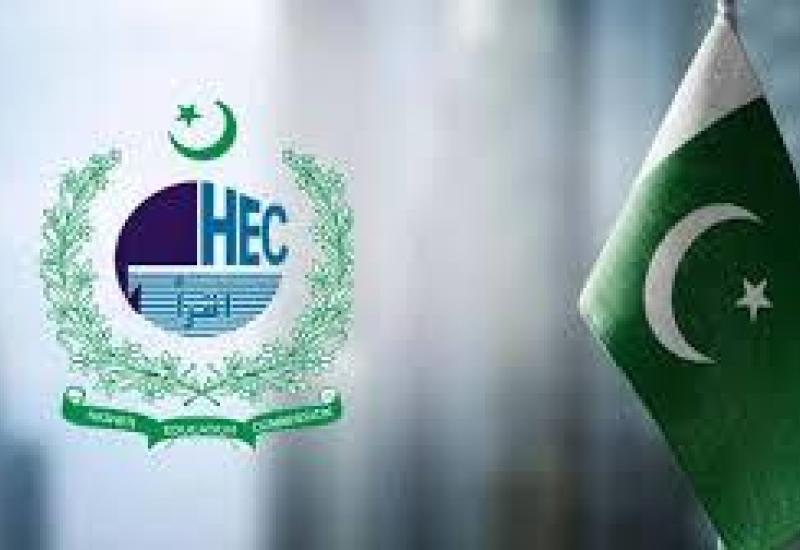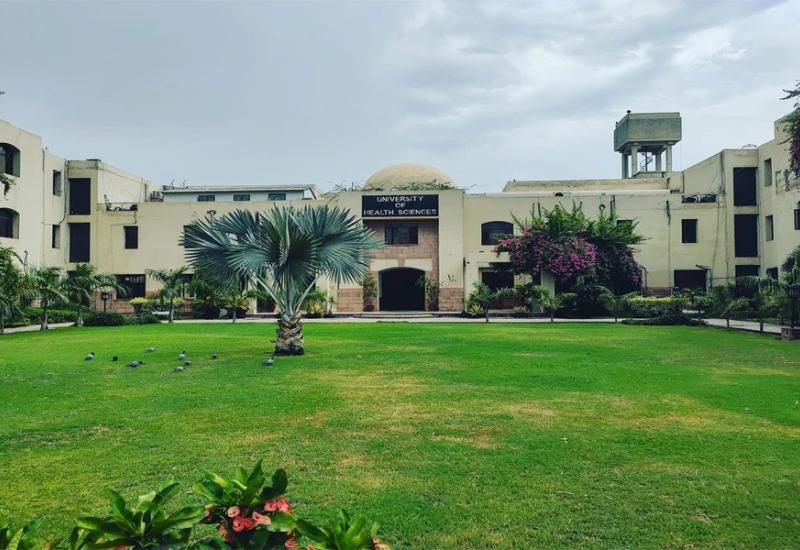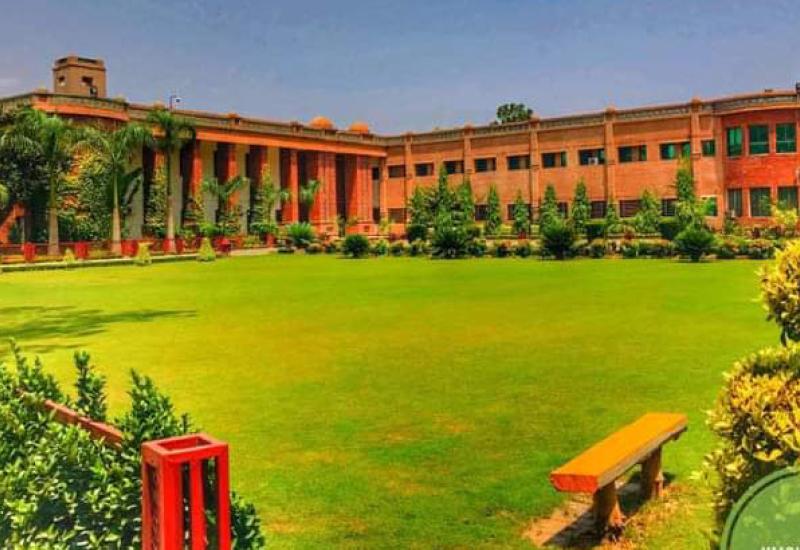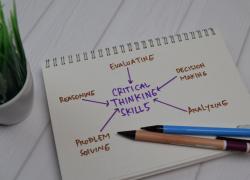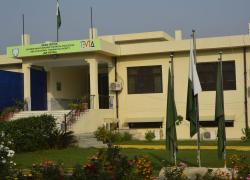The growing divide: Why more students are choosing Medicine over Engineering in Pakistan?
Prof. Dr. Zia ul Haq, Vice Chancellor, Khyber Medical University, recently shared the following graph on his LinkedIn page, illustrating the contrast of interest between students in the medical & engineering fields. He suggested more research into the matter to fully comprehend the underlying causes and factors responsible for this trend.

This data reveals an alarming trend of declining enrolments in engineering program across KPK as it depicts a dramatic drop in the number of applications for engineering entrance test, from 16,005 in 2017 to just 3,895 in 2024, reflecting a 76% decrease over the last 7 years.
Besides, these statistics serve as a valuable tool for understanding current educational trends, highlighting an important tendency in professional preferences and hence underscores the need for strategic interventions to balance student interests and ensure sustainable growth in both critical fields.
By tackling this situation, the appeal of engineering education can be enhanced and more students can be encouraged to pursue careers in engineering, harmonizing the trend between medical and engineering education in Pakistan. Hence, it is it important to comprehend the underlying reasons for this divergent inclination.
To understand various dimensions of this phenomena, I talked to one my colleagues who is an engineering graduate with MS terminal qualification from University of Engineering and Technology, Peshawar. His insight was telling. To probe deeper into the matter, I talked telephonically to five engineering and five medical graduates. But to capture the insight of the aspiring candidates, I got input from similar number of medical as well as engineering students who were seeking admission in their respective disciplines and have appeared in the ETEA test recently conducted for admission in engineering programs or were preparing for medical entrance exams (MDCAT) to be conducted soon by Khyber Medical University, Peshawar.
In the blog post, I present their insight on various points, particularly, the underlying reasons for the phenomena, its potential implications and how to negotiate this state of affairs.
The underlying reasons
The trend of increasing applications for entrance test to medical colleges and decreasing number of candidates to engineering colleges/universities can be attributed to several underlying reasons:
1.Perceived prestige and social status:
- Medical profession's esteem: In many societies, including Pakistan, the medical profession is highly revered. Medical professionals often enjoy a high social status and respect which can attract more students to the field.
- Parental influence: Many parents encourage and sometime force their children to pursue medicine because of its perceived stature and stability, steering them away from engineering.
- Cultural expectations: There is a strong cultural inclination towards medicine often driven by parental expectations and societal norms.
- Role models and success stories: Visible and noted role models in the medical field can inspire students to follow in their footsteps. Successful engineers might not be as prominently featured in society. Successful medical professionals may be more noticeable and eminent in society, serving as role models for students.
2. Economic factors:
- Job market stability: The medical field is often seen as offering more stable and lucrative career opportunities compared to engineering which can be subject to market fluctuations. Health professionals can easily run a clinic in any part of the country whereas engineers do not have such an opportunity.
- Higher earning potential: Medical professionals generally have the potential for higher earnings, especially in private practice, which makes the field more attractive to students and their families.
3. Educational infrastructure and opportunities:
- Quality of institutions: There is a perception that medical colleges offer better quality education and facilities compared to many engineering colleges/universities or the obvious reason of more investment in the field with a high rate of return. This perception can drive students toward medicine, whereas, investment in engineering education is dwindling for quite some time.
- Clear career pathways: The medical field has well-defined career pathways (e.g., MBBS followed by specialization and post-graduation) which can provide a clear trajectory for students. On the other hand engineering fields appear to be more diverse and less straightforward.
4. Employment trends and job market:
- Economic shifts: Economic changes can affect job markets differently. For example, fluctuations in the construction or manufacturing sectors might impact engineering jobs more than medical jobs.
- Technological changes: Rapid technological advancements can lead to uncertainty in certain engineering fields, making medicine seem like a safer choice.
- Market conditions: Fluctuations in certain engineering sectors, such as construction or manufacturing, can impact job security and attractiveness. In contrast, the healthcare sector often remains more stable.
- Technological advancements: Rapid changes in technology can create uncertainty in certain engineering fields, making medicine seem like a safer and more stable career choice.
5. Government and institutional policies:
- Scholarships and Financial Aid: More scholarships and financial aid might be available for medical students compared to engineering students, making medical education more accessible.
- Policy support: Government and private sector initiatives may be more focused on supporting and promoting medical education due to the critical need for healthcare professionals.
Healthcare Initiatives: Government initiatives to improve healthcare services can create more opportunities and incentives for students to pursue medical education.
What are its implications?
The divergent trends in the number of students applying for entrant exam to medical versus engineering colleges/universities in Pakistan have several implications:
1. Healthcare sector:
- Increased workforce: An increase in the number of medical students implies that more medical colleges shall be opening up producing larger future workforce of doctors which can help address healthcare needs and improve healthcare services in the country.
- Potential oversupply: An oversupply of medical graduates could lead to increased competition for internships, residencies and jobs. This might result in underemployment or employment in roles not directly related to clinical practice.
- Quality concerns: Rapid increases in the number of medical colleges and subsequent increase in medical students could strain educational resources, potentially affecting the quality of medical education and training in Pakistan.
2. Engineering and technology sector:
- Shortage of engineers: A decrease in engineering students could lead to a shortage of skilled engineers which could hinder technological development and infrastructure projects.
- Economic impact: Engineering is crucial for economic growth, innovation and development. A decline in engineering graduates could slow down progress in sectors like construction, manufacturing, IT and telecommunications.
- Innovation gap: Fewer engineering graduates might result in a gap in innovation and research which are essential for technological advancements and industrial growth.
3. Economic and industrial development:
- Healthcare improvements: More medical professionals can improve public health and increase access to healthcare services, which is vital for overall socio-economic development.
- Industrial lag: A decline in engineering graduates can negatively impact industries that rely on engineering expertise, leading to slower growth and potential difficulties in maintaining and expanding infrastructure.
4. Educational institutions:
- Resource allocation: Medical colleges might experience an influx of applications and students, requiring increased resources, faculty, and infrastructure to maintain quality education.
- Engineering colleges: Engineering institutions might face lower enrollment rates which could lead to financial challenges and underutilization of resources. This could necessitate policy adjustments and strategic initiatives to attract more students.
5. Labor market dynamics:
- Job market saturation: The medical field could become saturated with graduates, leading to increased competition for jobs and potentially lower wages for new doctors. This may create an ugly situation like other fields in Pakistan such as agriculture, management, engineering and Information Technology. Such medical graduates tend to seek job opportunities abroad hence earning substantial revenue for the country
- Engineering opportunities: Fewer engineering graduates might increase job opportunities and salaries for those who do pursue engineering, as the demand for skilled engineers remains high.
6. Societal implications:
- Perception of professions: The trend might reinforce the perception that medicine is the preferred and more prestigious profession, potentially undervaluing the importance of engineering and technology in societal development.
Diverse career opportunities: Encouraging students to explore diverse career paths beyond medicine and engineering could help balance the workforce and promote innovation across various fields.
How to tackle this issue?
Addressing the imbalance between the increasing number of students applying for medical colleges and the decreasing number applying for engineering colleges/universities requires a multi-faceted approach involving educational institutions, government policies, industry partnership and societal mind set change. Here are several strategies to tackle this issue:
1. Enhancing the appeal of engineering education:
- Improve quality and infrastructure: Investing in improving the infrastructure, laboratories and research facilities of engineering colleges to provide a better learning environment to the engineering students as a possible way-out is recommended.
- Faculty development: Enhancing the quality of teaching by providing professional development opportunities for faculty members is direly required.
Modernize curriculum: Updating engineering curricula to include emerging technologies, practical skills, and industry-relevant courses is vitally important.
2. Career counseling and awareness programs:
- Early Exposure: Introducing engineering concepts and career paths to students at the school level to build interest early on has been recommended.
- Showcase Role Models: Highlighting success stories of engineers and their contributions to society to inspire students may help in improving the situation.
Scholarships and grants: Offering scholarships, grants, loans and financial aid with favorable terms specifically for students pursuing engineering education is essential.
3. Industry-academia collaboration:
- Internships and practical training: Establish partnerships with industries to offer internships, co-op programs, and hands-on training opportunities for engineering students.
- Industry projects: Integrating real-world industry projects into the engineering curriculum to provide practical experience and fostering partnerships between the government, educational institutions, and the private sector to create opportunities for engineering education and employment.
Investment in technology parks: Developing technology parks and innovation hubs where engineering students and graduates can work on cutting-edge projects shall be crucial to promote engineering education.
4. Government policies and initiatives:
- Promotional campaigns: Launching government-led campaigns to promote engineering education and its importance for national development is suggested
- Policy support: Developing policies that support the growth of engineering sectors and create job opportunities for engineering graduates is required.
STEM Education: Investing in STEM (Science, Technology, Engineering, and Mathematics) education at all levels to build a strong foundation for future engineers is highly recommended.
5. Balancing resource allocation:
- Equitable funding: Ensuring that funding and resources are allocated equitably between medical and engineering institutions to maintain quality education in both fields and providing incentives for engineering colleges to innovate and attract more students is required.
Entrepreneurship and innovation: Promoting entrepreneurship and innovation in engineering to show students the potential for creating new businesses and technologies shall play an important role in this context.
6. Addressing perceptions:
- Changing mindsets: Working on changing societal perceptions that view medicine as the only prestigious and rewarding career shall produce a long term impact.
Media campaigns: Using media campaigns to educate the public about the crucial role engineers play in economic development and innovation shall help in attaining a right balance and harmonizing the trend between medical and engineering education in Pakistan.
By implementing these strategies, Pakistan can address the imbalance between medical and engineering education, ensuring a more balanced and sustainable development of both sectors. This holistic approach will help create a diverse and skilled workforce ready to meet the country’s future challenges and opportunities.

